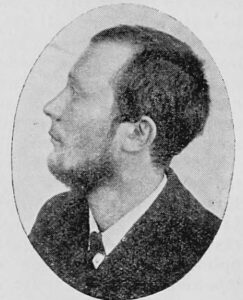Imagine someone walking up to you and asking if they can measure your nose. That was among other measurements taken by one anthropologist examining physical characteristics of thousands of Jews in 1911 New York City. On its face this sounds like some sort of antisemitic jest, but this observer was quite serious, and in fact sought to do the opposite: to challenge an age-old stereotype.
With recent controversy surrounding Bradley Cooper’s use of a large prosthetic nose when portraying Leonard Bernstein in the new movie “Maestro,” the topic of the Jewish nose trope has been brought into the spotlight. Let us examine one scientist who, in the early 20th century, sought to investigate this notorious stereotype: are Jewish people disproportionately prone to having a large, hooked nose?
Maurice Fishberg was a Jewish anthropologist who has studied the Jewish people extensively, and was not shy about making conclusions about questions such as physical traits the Jews might have, and whether they constitute a race.
In his 1911 work The Jews: A Study of Race and Environment, Fishberg presents “the results of anthropological, demographic, pathological, and sociological investigations of the Jews.” He finds that Jews have “significant differences depending greatly on their birth-place, social and political conditions, and, in general, the environment in which they find themselves.”
Fishberg has stressed the significance of environment when it comes to the characteristics of Jewish people, and ultimately dismissed the idea of a Jewish biological race. He maintained this belief more than twenty years later, in 1934, when he rejected the Nazi theory of a pure Aryan race.
“There are no pure races in any part of the world,” Fishberg said, according to the Jewish Telegraphic Agency. “There is no such thing as a Jewish race” either. In fact, “over twenty, and in some countries thirty, per cent of the Jews are blonds.” He then compared the notion of a Jewish race to the idea of a Christian or Muslim one. Rather, in terms of physical traits, “the Jews resemble the type of people among whom they live.”
The Jewish Advocate questioned Fishberg’s bold conclusions surrounding Jewish identity in his 1911 study: “Every word packed into the volume had been set here to accomplish a very specific purpose,” which is “to prove that Jews are neither a race nor a nation, and consequently that there is no justification for the Zionist movement.”
Fishberg had acknowledged this dilemma of Jewish identity — “on the one hand we have those Jews who take great pride in the purity of their breed, and, on the other, the people among whom they live who see a peculiar peril in the prospect of indefinitely harbouring an alien race which is not likely to mix with the general population.” Jewish advocates for “repatriation in Palestine, or some other territory,” he continues, corroborate “the opinion that they are aliens in Europe.”
It is an interesting discussion — does emphasizing Jewish identity, and insisting on uniqueness as a chosen people, fan the flames of antisemitism? It is a sensitive issue that Fishberg has not shied away from, and it is worth unpacking in an article of its own. For now, let us focus on the contents of his study.
Fishberg believes there is a great diversity of origin among the Jews in New York City, which is where he chose to do his study and obtain “anthropometric measurements.” Among such measurements include height, “size of the head,” “weight of the brain,” the chest, and yes, the nose.

Upon discussing the trope of the Jewish nose in this work, Fishberg condemned “the cartoonists, who always exploit this part of the Jewish anatomy, and never draw a Jewish face without a nasal appendage which looks like the beak of a parrot,” and “most of the writers of fiction,” who “rarely omit to mention the large, protruding, hooked nose of the Jew.” “Even anthropologists,” he asserted, “have been led astray by this popular notion.”
“It may consequently be surprising,” Fishberg continued, “that observations among the Jews show that there is no valid reason for considering the arched or hooked nose as peculiarly Jewish.”
Fishberg then directs us to the results of his study, which “do not bear out the popular opinion that the hook nose is to be considered the ‘Jewish’ nose, because only a small minority of Jews have the privilege of possessing this kind of nose.”
According to Fishberg’s findings, only 14.25% of Jewish males have the stereotyped hooked nose, and an even smaller number, 12.70%, is seen among Jewish females. Fishberg notes that, even in countries such as Russia, Austria, and Hungary, observers “found a rather low proportion” of the hooked nose.
There is fluctuation too, with some findings as low as 2% and the number among Galician Jews being 30%. “This contradicts flatly the prevailing popular opinion that every Jew is the possessor of a hook nose,” he wrote.
So, per Fishberg’s findings the nose type also fluctuates depending on where the individual is originally from, demonstrating a lack of, shall we say nasal homogeneity, among Jewish people. This challenges the stereotype and supports Fishberg’s argument that the biological characteristics of Jewish people might be more based on environment than some sort of racial factor.
In a study highly unlikely to be conducted today, anthropologist Maurice Fishberg measured the physical characteristics of Jews, including their noses, in order to examine and ultimately try to disprove a notorious trope. He observed, through his findings, that the hooked nose is indeed not a Jewish nose. It is a nobody nose.